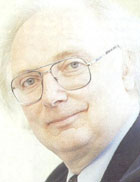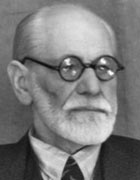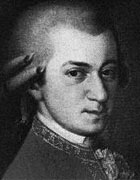2006 British Open Championships - Test Piece Review
4-Sep-2006A fantastic piece is on offer this weekend with Philip Wilby's amazing homage in 'Vienna Nights'. This what we thought of it when we heard it before the big day.
 To put it rather bluntly – 'Vienna Nights' is an absolute stonker of a piece.
To put it rather bluntly – 'Vienna Nights' is an absolute stonker of a piece.
Philip Wilby's masterful fantasy on Mozart's Piano Sonata in A, K331 is arguably his finest work for brass band and will become an instant classic of the genre. No other composer for brass could so successfully bring together two such diverse strands of compositional matter and architecture into one coherent symbiotic relationship like he has done here. It is a breathtaking achievement of subtle mastery for Wilby has achieved the musical equivalent of turning base metal into pure gold. This is brass band compositional alchemy, and the result is quite startling.
The key is perhaps found in the subtitle to ‘Vienna Nights' itself. Wilby calls it a ‘fantasy' which allows him the scope to develop his own thoughts and themes, structures and ideas without ever losing the purity of the original thematic material. It is not an arrangement, realization, transcription of straight copy and paste job of the original with added on bits. If it were, it would have been a disaster. What we get therefore is a classically structured piece in Sonata form where the germ of the original musical thought is developed without ever changing its historical DNA.
The Mozart music that forms the basis of the work is untouched and allowed to stand alone in all its glory, however brilliantly Wilby surrounds it with his kaleidoscopic array of inspired personal ideas. It is therefore a piece that delineates the dichotomies between the two composers to the full – the almost simplistic beauty of Sonata and the joie-de-vivre of the Turkish Rondo allied to the intervening more muscular and complex layers of Wilby and his own homage to the 12 tone harmonics of Schoenberg. The result as we have said – is quite something indeed.
 The piece, played in one continuous movement is broken into the sonata form: The first entitled ‘Freud's Dreams' is itself homage to the great thinker and father of psychoanalysis. This short introductory section leads to part 2 – ‘Variations' which itself is broken into a series of continuous variations on the Mozart theme from the Piano Sonata. The nine mini variations cover just about every aspect of musical development you can think of, but always at their core is a pure circulatory bloodline, like a series of veins and arteries connecting every musical strand to the Mozart heart. The third section is marked ‘Scena and Notturno' and is the most operatic in style and content before that itself sets the scene for the finale.
The piece, played in one continuous movement is broken into the sonata form: The first entitled ‘Freud's Dreams' is itself homage to the great thinker and father of psychoanalysis. This short introductory section leads to part 2 – ‘Variations' which itself is broken into a series of continuous variations on the Mozart theme from the Piano Sonata. The nine mini variations cover just about every aspect of musical development you can think of, but always at their core is a pure circulatory bloodline, like a series of veins and arteries connecting every musical strand to the Mozart heart. The third section is marked ‘Scena and Notturno' and is the most operatic in style and content before that itself sets the scene for the finale.
This is the romp of the ‘Finale Alla Turca' brought to life with an injection of pace that would leave the sprinter Marion Jones in her tracks. This is still very much Mozart, but Mozart on a diet of Red Bull chasers – it's wickedly joyful, devilishly difficult and quite amazing to listen too (and we suspect to play).
Back to the opening though (marked Quasi Presto Minim=120). Here the Schoenberg 12 tone scale and harmonic structure is set out in two diverse layers. First the upper band with a bubbling ferment of running quavers (slurred and then tongued) which rides quietly (and we are marked pp here) over the same structure which has been elongated in the bass end to form a dark and almost grotesque melodic line.
The trick – if there is such a thing in this brilliant writing is to gauge balance and meter and these are perhaps the two essential ingredients throughout the work. Mozart only ever wrote in two or three dynamic levels, whilst Wilby employs eight or more, and so the complex layers must be laid out both to enhance clarity and to retain that all important sense of balance. There is nothing hidden here, and if played to the letter it sounds a wonderful mixture of the conscious and sub conscious – a bit like old Freud and some of his risqué old dreams in fact.
This leads into Variations (marked L'istesso tempo) which quickly makes way for the Mozart Theme, played, muted by the solo cornet and second baritone. This is first most striking example of getting the balance and tempo right, for interspersed are delicate filigree arpeggios marked to start at mf but dying away to either piano or pianissimo. It is delicate and precise, allowing for flexibility in the main solo line that will enhance the feeling of almost perfect compositional technique. Beware though the conductor who thinks it is an excuse for good old fashioned rubato, (and we are sure there will be plenty who will seize the chance to pull the music like a bit of old chewing gum) – it doesn't work.
The first mini variation enhances beautifully the thematic material – a little occasional duet of sorts with impeccable manners between the flugel and horn before Variation 2 (marked quasi presto) flows effortlessly with detail and precision like a Swiss watch (and with equally intricate parts) all demanding dynamic control and precise balance. Wilby then takes us in a completely new direction with his playful Variation 3 which is subtitled ‘Café Life' and has a 1940s dance band (although you are reminded of Django Reinhardt and his friends by the style) feel.
 This is Mozart, Freud and Mahler enjoying a cup of coffee (or possible a few Gitanes and a glass of Ricard) in a café opposite the famous opera house in Vienna. Its all so laid back and very gauche with a subtle undercurrent from the percussion. A lovely discourse between a horn (should be second horn, but look out for some sub work from the solo horn as it goes up to top Bb) and flugel is almost an intimate chat between Mahler and Freud at Mozart's expense it seems (Variation 4), whilst in the short Variation 5 the passersby and ‘onlookers' as Wilby calls them cast an eye to see what these three men are on about.
This is Mozart, Freud and Mahler enjoying a cup of coffee (or possible a few Gitanes and a glass of Ricard) in a café opposite the famous opera house in Vienna. Its all so laid back and very gauche with a subtle undercurrent from the percussion. A lovely discourse between a horn (should be second horn, but look out for some sub work from the solo horn as it goes up to top Bb) and flugel is almost an intimate chat between Mahler and Freud at Mozart's expense it seems (Variation 4), whilst in the short Variation 5 the passersby and ‘onlookers' as Wilby calls them cast an eye to see what these three men are on about.
Just when you think things are in agreement and all three great egos are friends (Variation 6 just flies by with nods and winks to all three) it appears Mozart says something (introduced by a flying tenor horn) that upsets the other twos. (Perhaps it's the use of accidentals in the upward and downward runs here – Mozart wrote these always in a major key) so Mahler and Freud lose their patience and bang the tables (there will be quite a few people who will jump up in their seats here as if they have just had 20,000 volts up their jacksy) as if to put the young upstart in his place.
Variation 7 comes thrillingly to life as Mahler and Freud show their emotion.
Mozart of course wins out and the beautiful ‘Soliloquy' – Variation 8 showcases the Eb tuba in musical reference to his opera ‘Don Giovanni' and Octavio's lovely lyrical aria. Again flexibility (and not over emotional slush) is the key before we lead into the final Variation 9 and the scampering ‘Gallop' which although not marked with a metronome marking should be taken around 170 – 200 crotchets if it is to come off. This is as delicate as the best bone china but equally as brittle, and if things do go wrong here it will quickly descend into farce. Listen out though for the ‘Jingling Jonnie' – a bell like contraption much favoured by Nazi marching bands of all things, which gives that strange sleigh bell feel as if someone has just taken a bit from a Turkish Delight chocolate a few bars too early.
The ‘Scena and Notturno' are pure opera – all OTT and almost slapstick (and we mean almost) in character. This is a homage to that old rouge, womanizer and drunkard Don Giovanni and what befalls him after he beds one woman too many, kills her elderly sugar daddy and dreams a drunken nightmare of being dragged into the bowels of the earth and a meeting with Beelzebub after the statue of this dead protagonist comes to life.
The effects of imbibing a bit too much are clearly heard (as is the 12 note series once more in the troms as he heads for a hot date in Hades), whilst up pop a series of soloists (and duets) to inform the audience in recitative style of what has gone on in the story so far and what awaits them around the corner in the breathtaking finish. This is so cleverly done and the music is delicious before a wickedly paced build-up for the all bells and whistles Finale and the famous Alla Turca music.
This is a tour de force of immense proportions (no metronome mark – but it should be around the 180 – 200 mark – and that is flying) with a 3/2 theme played over a 2/2 structure. Its complex but thrilling and will take some playing especially as it is marked ‘Barbaro!' meaning barbaric as well as ‘Wild!' in other parts. It accels and accels to a huge climax and the reintroduction of that 12 tome harmonic structure to round things off without a hint of a massive rall (there isn't one marked folks) so those MDs dragging the last ounces of sweat and tears from their players at the end may well be shooting themselves in the foot.
It rounds off a truly fantastic piece for brass band – brilliantly brought to creation by Philip Wilby with such an intuitive understanding of the Mozart oeuvre that you wonder why no one has ever tried it before. The reason is that the old Prof is a genius himself in his own way that's why – and on Saturday you will be able to hear homage in all its glory.
Iwan Fox.















